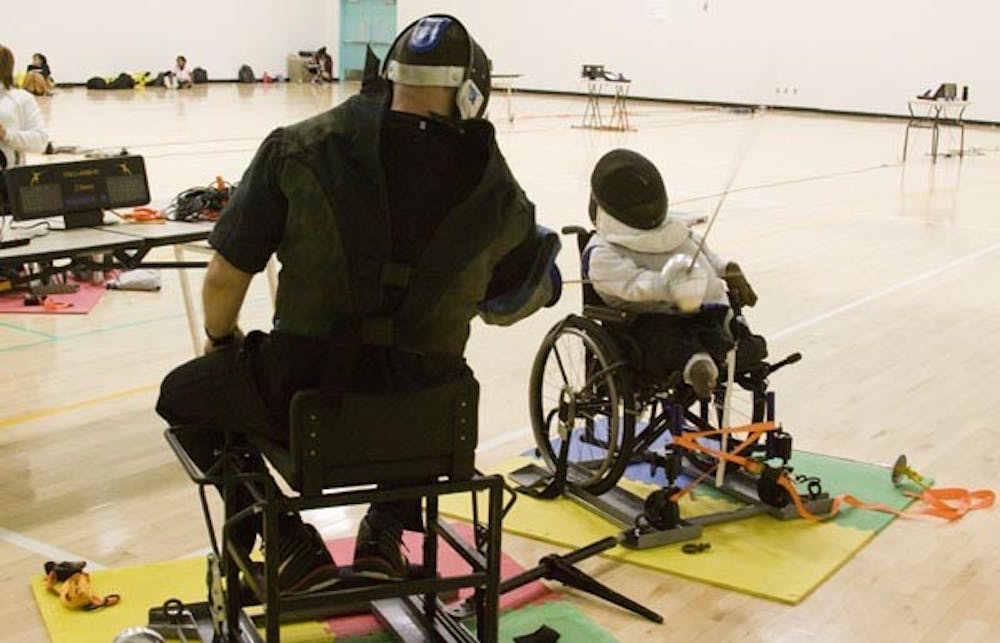Slashing and stabbing with skill and speed is the goal of every fencer, and those skills are compounded for seated fencers.
Arizona’s first seated fencing team, created in January 2009, has given some with disabilities a chance to promote exercise and health when they may not have many other options, said Lauri Alexander, a board member of the Grand Canyon Seated Fencing Foundation.
Seated fencers range from those who were born with severe disabilities to those with minor injuries that affect agility, said Pia Douglas, secretary for the seated fencing foundation.
The club came to ASU this semester and the foundation was created to support the team financially.
Seated fencers only compete in chairs that are fixed to the ground because they can’t participate in the same footwork as other fencers, she said.
The team previously trained at Mesa’s Webster Gym & Recreation Center, but wanted the chance to practice with the ASU fencing team, she said.
The team has 12 members and practices every week at the Student Recreation Complex. Only six members of the team travel to competitions across the United States, and the others participate for their own enjoyment, Douglas said.
Fencing is a modern day form of sword fighting that incorporates three kinds of events named after the kind of weapon used. These three weapons are called epee, foil and sabre, and each one is used differently.
In epee and foil, the fencer tries to hit his or her opponent anywhere above the waist with the tip of the weapon, she said. In sabre, fencers are allowed to use the broad edge of their swords.
Sonya Perduta, a team member and certified rehabilitation nurse, won the silver medal and the bronze medal at the 2010 Atlanta Summer National Championships and she said that she hopes to qualify for the 2012 Paralympics in London.
“It’s really fun stabbing at folks,” said Perduta, 58.
The team has helped Alexander and her family find a way to promote activity and endurance.
Alexander’s son, 19-year-old Jacob Driscoll, has brittle bone syndrome and Alexander said when he started fencing he couldn’t hold the weapons for more than a few minutes. Now he fences for two hours at a time.
“It was incredible for his strength building,” Alexander said.
Jacob Driscoll’s sister, Jeena Driscoll and a May 2010 ASU political science graduate, said she was a part of the fencing club before it came to ASU and that it helped relieve stress during her senior year of school.
“I hadn’t really found another extra-curricular activity here that I liked,” Driscoll said.
Now that the club is practicing at ASU, she said she continues to take part.
Moving the team to ASU and practicing at the Student Recreation Complex also allowed the team to fence with ASU’s Salle Diablo fencing team, said Adrian Colcisca, the seated fencing coach.
The relationship between the ASU fencing team, Salle Diablo, has been very positive, Colcisca said.
ASU students and other fencers practice seated fencing because it helps them to develop faster reflexes. The exercise challenges them because they are never allowed to fence a seated fencer while they are standing, so they cannot back away from the their opponent to think about their strategy, Colcisca said.
“Sometimes [students] are scared and freaked out,” Colcisca said.
Before Colcisca immigrated to the United States he was an alternate for the 1992 Olympic games on the Romanian fencing team. In 1996 and 2000 he was a coach for the Romanian Olympic fencing team.
Reach the reporter at mary.shinn@asu.edu





